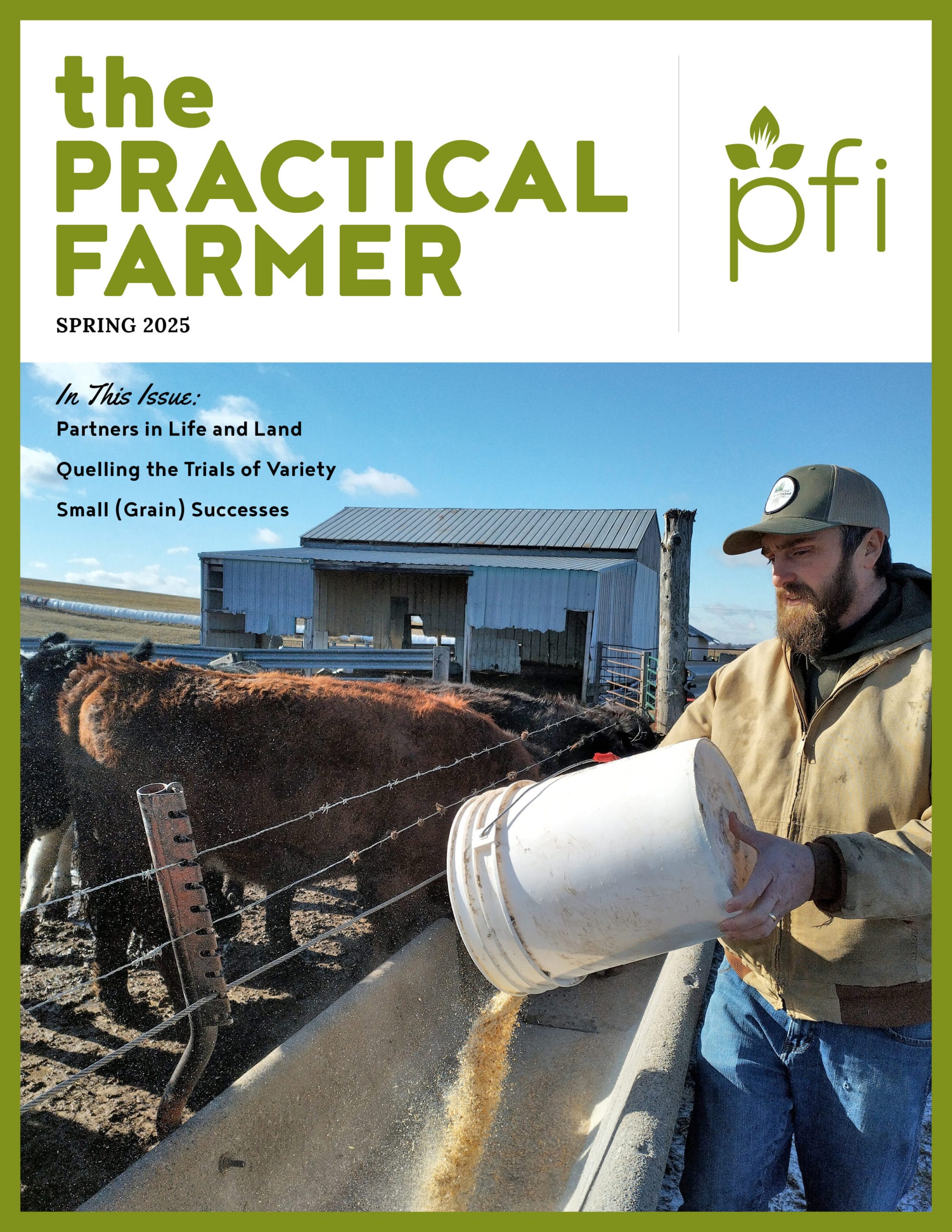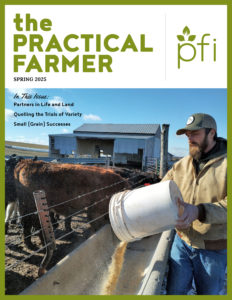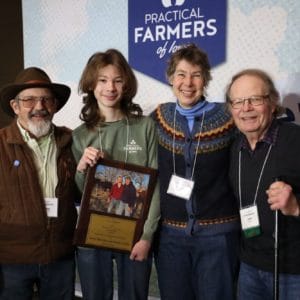the Practical Farmer: Spring 2025
Table of Contents
- From the executive director
- Habitat
- Field Crops
- Livestock
- Beginning Farmers
- Horticulture
- 2025 Annual Conference Photo Recap
- Sustainable Agriculture Achievement Award
- Member Book Review
- Member Photos
- PFI News
On the cover:
Ryan Wallace started milling grain to fully use his diversity of crops in livestock feed. He and his wife, Ashley Wallace, grow a range of certified organic small-grain crops as well as corn and soybeans. Find out more on page 11 about how some farmers are benefitting from milling their own livestock feed.
Habitat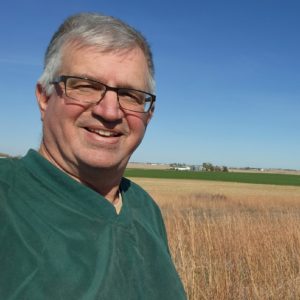
Fields of Feathers
By using cover crops, rotational grazing and extended rotations, farmers are helping their soil – and making space for birds.
Field Crops
Small (Grain) Successes
Small-grain producers use creativity and relationships to establish markets and build resilience.
Livestock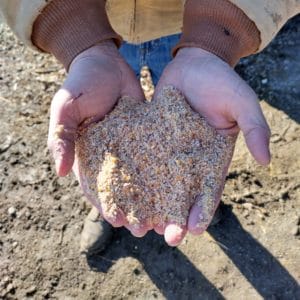
It’s a Grind
For some farmers, the benefits of milling their own livestock feed outweigh the extra work.
Beginning Farmers
“Rooted in Nature and Guided by Tradition”
At NaTerra Farm, Sandro Lopes is applying Indigenous knowledge to grow food and community.
Horticulture
Quelling the Trials of Variety
Faced with overwhelming options, some farmers use on-farm research to guide decisions about which vegetable varieties to plant.
Annual Conference Photos
2025 Annual Conference
See images of learning, connection, food and fun our 2025 annual conference in Des Moines, Iowa.
Sustainable Agriculture Achievement Award
Partners in Life and Land
Barney Bahrenfuse and Suzanne Castello are transforming their midsized farm, creating greater harmony with the land.
PFI News
Meet the Newest Staff Members of PFI’s Team
Heidi Ackerman
Farm Systems Viability Manager
Read Heidi’s bio
 Jim Kain
Jim Kain
Finance Director
Read Jim’s bio
 Sandy McAntire
Sandy McAntire
Data Systems & Member Engagement Manager
Read Sandy’s bio
 Terri Speirs
Terri Speirs
Development Director
Read Terri’s bio
 Alexandria Atal
Alexandria Atal
Senior Grants Finance Coordinator
Read Alexandria’s bio
 Kaitlin Little
Kaitlin Little
Senior Data & Member Engagement Assistant
Read Kaitlin’s bio
 Jose Cesario Pinto
Jose Cesario Pinto
Remote Sensing Data Coordinator
Read Jose’s bio
 Tylar VanPelt
Tylar VanPelt
Office Assistant
Read Tylar’s bio
On-Farm Research Corner
Does Strip-Tillage Pay Off?
According to the 2022 Census of Agriculture, just over half of U.S. cropland is managed using a conservation tillage practice like no-till or
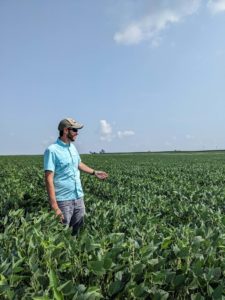
Keaton Krueger in the field where he was comparing strip-till and no-till soybeans on Aug. 8, 2023. There were no visible differences between treatments at this point in the summer.
strip-till. Scientific understanding and conventional wisdom suggest that strip-tilled corn and soybeans generally yield a bit better than their no-tilled counterparts. Despite this, no-till is the more common practice. But farmers often wonder if strip-tilling would lead to higher corn or soybeans yields. They also wonder if it would pay for the extra labor, equipment and fuel needed for strip-tilling, resulting in higher profits.
In 2018, 2023 and 2024, PFI farmers explored these questions on their farms. They found that strip-till only sometimes pays for itself via increased yields. In corn, only one of the four trials found that strip-till corn significantly outyielded no-till corn and had higher net profits. Soybean results were similar: Only one of three trials found a significant yield advantage in strip-till.
That trial was conducted by Keaton Krueger in 2024. The result has helped him decide that, for his farm, the benefits of strip-till outweigh the extra costs and labor. He now plans to strip-till all of his soybeans. Other farmers have decided differently. Last year, Landon Brown decided to start no-tilling all his corn after his trial showed no significant yield difference between strip-till and no-till. He says that even if he observes a 5-6 bushel per acre yield advantage from strip-tilling, the costs of fuel, owning a strip-till bar and time spent tilling cancel out any economic advantage.
In summary, PFI farmers have found that you might just have to test for yourself whether strip-till is economically better than no-till for your farm.
Want to dig deeper?
To learn even more about this and other projects going back to 1988, we encourage you to explore the research reports on our website at practicalfarmers.org/research.
Interested in conducting a research trial to hone your seed-starting system or any other practice on your farm?
Contact Emma Link at emma.link(at)practicalfarmers(dot)org or (515) 232-5661 to learn about joining PFI’s Cooperators’ Program.

